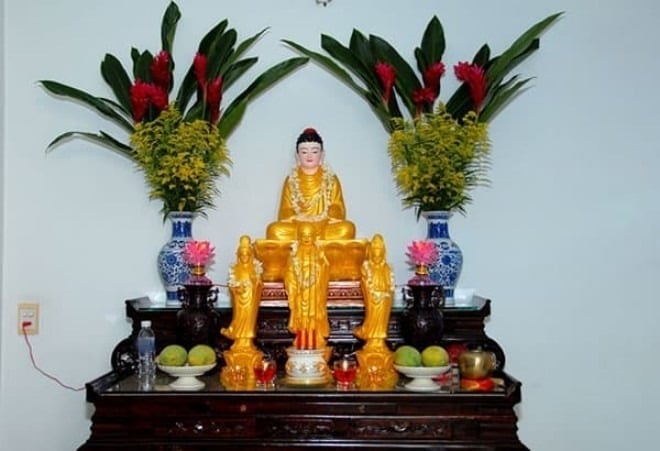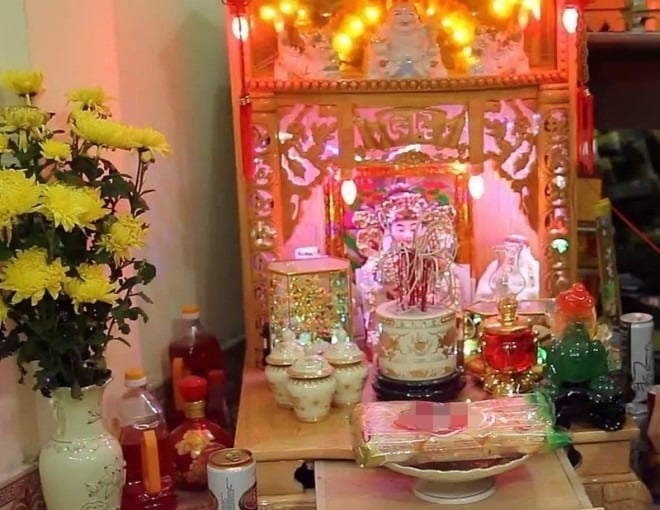On the first and full moon days of the month, as well as during holidays and death anniversaries, a flower vase is an indispensable offering on the ancestral altar. Flower arrangement not only symbolizes attraction and accumulation of wealth but also demonstrates the sincerity of the homeowner.
Fresh flowers bring vitality and gather the essence of the earth and sky. Placing a flower vase on the altar not only adds solemnity and purity to the worship space but also attracts wealth and enhances the family’s fortune, bringing protection from ancestors and deities.
However, not everyone knows the proper way to place a flower vase on the altar.
Why do wealthy families usually place a flower vase on the left side of the altar when offering incense?
Typically, affluent families pay great attention to worship and adhere to feng shui principles. They believe that arranging the altar according to feng shui not only shows respect to their ancestors but also brings blessings and prosperity to the family.
According to the feng shui rule of “east vase, west fruit,” if there is only one vase, it is usually placed on the left side of the altar, which is the east. This is based on the natural law that the sun rises in the east and sets in the west, and flowers bloom before fruits form. Thus, placing the vase in the east and the fruit plate in the west symbolizes harmony with nature, ensuring the family’s well-being.

Affluent families often adhere to worship rules and feng shui principles.
If the altar faces the main entrance in a southern direction, placing the flower vase on the left (east) will catch the eastern or southeastern breeze, spreading the incense’s fragrance and adding tranquility and solemnity to the worship space.
In the case of using two vases, they should be symmetrically arranged on both sides of the altar, with the fruit plate in the middle, in front of the incense burner. This setup not only makes the altar look complete and dignified but also preserves the feng shui meaning of the flower vase.
Additionally, homeowners should pay attention to other worship items such as the three-piece or five-piece sets, offering trays, and incense holders to further enhance the sanctity of the worship space.

For two vases, arrange them symmetrically with the fruit plate in the middle.
For smaller altars, such as those hung on walls, only one vase and an incense holder should be placed opposite each other. Avoid overcrowding the altar with too many vases, as this can disrupt the balance with other worship items.
The flower vase on the altar should be made of ceramic, porcelain, or glass, avoiding materials like copper or iron. The flowers should have a gentle fragrance, be free of thorns, and be neatly trimmed to ensure both spiritual value and safety.
The 5 Taboos of Altar Placement: A Guide to Preserving Wealth and Luck
The ancestral altar is the most sacred and revered space within a Vietnamese household, serving as a testament to the family’s devotion and respect for their ancestors. The placement of this altar is of utmost importance as it can bring about either positive or negative influences on the family’s well-being.



































